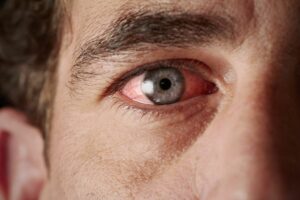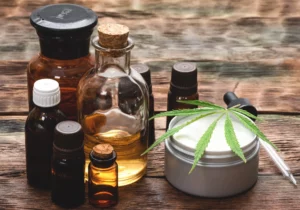When you popped that cannabis edible in your mouth, you thought you were signing up for a mild experience, one that would have you feeling happy, giggly and slightly altered. But instead, you’re dizzy, lethargic and way too high.
The room is spinning, and all you want to do is lay down on the couch and rest. Worst of all, the situation isn’t improving; it’s been hours and you still feel high.
What went wrong? Well, you can pin it on a version of the infamous cannabis compound tetrahydrocannabinol (THC) called 11-hydroxy-THC.
Bad edible experiences are common, especially with folks who are new to taking cannabis in this form. These mishaps usually arise because of confusion about how different cannabis can affect us when eaten instead of inhaled. In fact, eating cannabis is so different because our bodies convert cannabis’s most potent and psychoactive chemical into a compound that’s even more powerful and mind-altering.
Let’s delve into the science behind this version of THC, 11-hydroxy-THC, and how to harness its powerful effects for your medical needs.
FOLLOW US ON FACEBOOK & INSTAGRAM
What Is 11-Hydroxy-THC?
The cannabinoid that causes the powerful effects of cannabis edibles, 11-hydroxy-THC, isn’t actually found in the cannabis plant—and it’s not even part of your marijuana edible. This potent medicinal chemical is created by your body when it breaks down THC, which is technically known as delta-9-THC (but we’ll just refer to it as THC for simplicity).
While there hasn’t been a lot of research into the medicinal effects of 11-hydroxy-THC, the research that has been done shows that it has powerful psychoactive effects, and similar physiological effects to THC. Medical marijuana patients also report that edibles, which cause high levels of 11-hydroxy-THC, provide long-lasting pain relief and anti-inflammatory effects.
RELATED: CONSUMING CANNABIS EDIBLES TO IMPROVE YOUR HEALTH
The Science of 11-Hydroxy-THC & Edibles
If 11-hydroxy-THC isn’t present in cannabis, how is it made?
Well, it starts when you eat THC. This powerful and plentiful cannabinoid travels through your digestive system and eventually makes it to your liver where it’s broken down into other molecules called metabolites. While metabolites are usually more powerful than the compound being broken down, in some cases, they’re actually much more potent and powerful. This is the case with 11-hydroxy-THC.
When you smoke THC, your body does create some 11-hydroxy-THC, but it’s around 10 times less than what’s created when you eat THC.
Some believe this means 11-hydroxy-THC is as much as 10 times stronger than THC, but it isn’t quite as simple as that. While it’s much more potent, scientists say this estimate is too high based on their research.
For example, in one study two groups of patients were intravenously given the same amount of either THC or 11-hydroxy-THC. Patients then reported on how high they felt afterwards. Subjects given THC reported on average a three out of 10 when asked how high they felt. Those who had 11-hydroxy-THC in their system reported an average of eight out of 10.
This suggests that 11-hydroxy-THC is more potent and powerful than THC is, but only two to three times more, not 10 times. The effects of both are present in edibles, but 11-hydroxy-THC is much more plentiful, so it should account for the majority of the edible’s effects.
The Benefits of 11-Hydroxy-THC
While there hasn’t been nearly enough research on the specific medical effects of 11-hydroxy-THC, medical marijuana patients have been consuming edibles for their medical needs for thousands of years. There are benefits to taking edibles that keep patients coming back to them and to 11-hydroxy-THC. So, what makes this method different from the rest?
-
Cannabis edibles last longer: For one thing, edibles have longer-lasting effects. While they take longer to start working—typically 60–120 minutes as opposed to 10–15 minutes with smoking—they can last much longer. A cannabis edible high usually lasts six to eight hours, while the high from smoking only lasts around two or three hours. For patients with medical conditions like chronic pain, anxiety or depression, it can be especially helpful to have a long- lasting medicine that doesn’t require medicating over and over again throughout the day.
-
Marijuana-infused foods are more sedative and psychoactive: Folks have noted that the effects of edibles are slightly more sedative than when they smoke cannabis. This can make edibles a great choice for conditions like insomnia. A dose taken a few hours before bedtime can lead to a strong sense of sleepiness when it’s time for bed. Since it’s also long-lasting, the sedation can continue all the way through the night, fading just in time for morning.
How to Take 11-Hydroxy-THC
If you want to use 11-hydroxy-THC for your medical needs, there are two important things you should know to make sure you have a positive experience:
1. Not all edibles produce 11-hydroxy-THC to the same extent. This is because not all edibles contain high levels of THC. As it turns out, THC actually starts out as tetrahydrocannabinolic acid (THCA), which is the acidic form of THC. THCA has medical benefits but isn’t psychoactive, and it doesn’t metabolize into 11-hydroxy-THC. To create the THC needed to turn into 11-hydroxy-THC, THCA needs to go through a process called decarboxylation where it converts into delta-9-THC. This happens when it’s heated in a specific temperature range.
If you’re making your own edibles directly from cannabis, you’ll need to start with decarboxylation if you want to get the effects from 11-hydroxy-THC. If you’re buying your cannabis edible elsewhere, you want to look for an edible that’s made from THC rather than THCA or cannabidiol (CBD). Most edibles are THC-based and have already been decarboxylated, but it’s important to double check.
2. The other key factor for using 11-hydroxy-THC effectively is controlling your dose. It can be easy to eat too much of the edible for your needs. And because it takes one to two hours to start working, many times people think the edible isn’t working and too quickly they eat more after they’ve had their first dose. This is the worst thing you can do—and is a one-way ticket to a bad edible trip.
Instead, start with a very low dose, nothing above 2.5–5 mg. Then wait two hours before taking any more. You may not feel anything or you may feel very high, it depends on the person. But this dose is low enough that you shouldn’t have a bad trip. Once you know how the edible affects you, if you feel the dose was too low, try more next time, but only a little bit more. Increase your dose slowly in 2.5–5 mg increments each time. Once you’ve reached a dose that’s effective for dealing with your symptoms, stop and stay at that dose.
With these simple guidelines, you can begin to enjoy the benefits of 11-hydroxy-THC without having to deal with negative side effects.
Photo credit: Foodie Factor
If you’re new to cannabis and want to learn more, take a look at our Cannabis 101 index of articles. HelloMD can help you get your medical marijuana recommendation; it’s 100% online, private and efficient.






